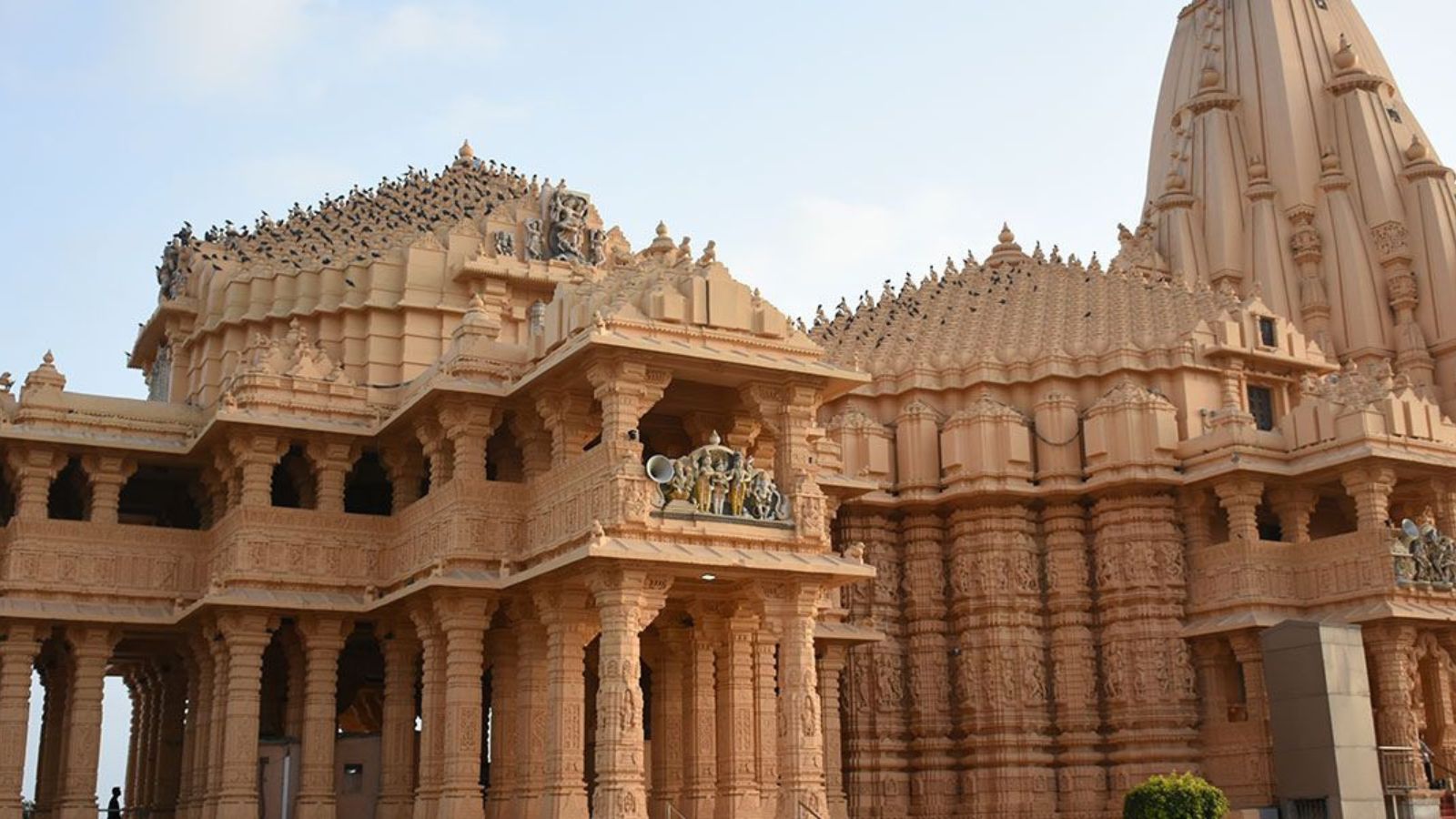The Shree Somnath Jyotirling Temple holds a revered position in Hindu mythology and Indian history. Dedicated to Lord Shiva, it is one of the twelve Jyotirlingas—shrines where Shiva is worshipped in the form of a sacred light. But this temple is more than just a place of worship; it’s a symbol of endurance, spirituality, and cultural richness that has withstood centuries of change.
The Significance of Jyotirlingas in Hinduism
Jyotirlingas represent the radiant energy of Lord Shiva, making them extremely sacred sites for Shiva devotees. The Somnath Jyotirling is the first among the twelve, and according to Hindu beliefs, it is where Lord Shiva manifested as a fiery column of light.
Location and Historical Importance
Situated in Prabhas Patan, near Veraval in Gujarat, the Somnath Mahadev Temple stands majestically by the Arabian Sea. The site has been a center of religious activity for thousands of years, with historical texts tracing its existence back to ancient times.
The Ancient Origins of the Temple
The origins of the Somnath Temple date back to antiquity, with mentions in the Rig Veda and other sacred texts. It is believed to have been originally constructed by Chandra Deva (Moon God) to seek forgiveness from Lord Shiva. The temple’s history is also marked by invasions and destruction, yet it has risen each time, stronger than before.
The Repeated Reconstructions
The Somnath Temple has been destroyed and rebuilt several times. Its first destruction is attributed to Mahmud of Ghazni in 1025 AD. Subsequent reconstructions were carried out by various rulers and devotees, symbolizing the temple’s resilience. The most recent reconstruction was completed in 1951 under the guidance of Sardar Vallabhbhai Patel, the first Deputy Prime Minister of India.
Architectural Style and Features
The temple’s Chaulukya style of architecture reflects a blend of Hindu and Rajput influences. The towering spire reaches a height of over 150 feet, topped with a Kalash (pot) weighing 10 tons. The intricate carvings on the temple walls showcase the artistry of ancient Indian sculptors, telling tales from Hindu mythology.
The Symbolic Representation in the Design
The temple’s architecture isn’t just about beauty; it’s deeply symbolic. The positioning of the temple is such that there is no land between Somnath’s coast and the South Pole, symbolizing the temple’s place at the edge of the world—a spot of divine energy.
Connection to Lord Shiva and the Moon God
According to Hindu mythology, Chandra (the Moon God) was cursed by Daksha Prajapati to lose his radiance. To regain his lustre, Chandra prayed to Lord Shiva at Somnath, and after years of penance, his curse was lifted. Hence, the temple is named “Somnath,” meaning “The Lord of the Moon.”
Legends Associated with the Temple
The Shree Somnath Temple is steeped in legend. One such legend speaks of Lord Krishna’s final journey to heaven from this very place, at Bhalka Tirtha, near Somnath.
Daily Rituals and Poojas
The temple follows a daily schedule of rituals and poojas, starting with the morning Abhishekam (ceremonial bath of the Shiva Lingam). The Aarti rituals, especially the evening Aarti, are significant as they resonate with the divine vibrations of Lord Shiva’s presence.
Festivals Celebrated at Somnath
Some of the key festivals celebrated at Somnath Temple include Maha Shivaratri, which attracts thousands of pilgrims from across the country. The temple is also a major center for the celebration of Shravan Maas.
Importance of Somnath as a Pilgrimage Site
For devout Hindus, a pilgrimage to Somnath Jyotirling Temple is considered a step toward moksha (liberation). The temple is one of the key stops in the Char Dham Yatra, alongside Dwarka, Rameswaram, and Badrinath.
How to Reach Somnath Jyotirling Temple
Somnath is easily accessible through various means:
- By Air: The nearest airport is in Diu, about 85 km away.
- By Rail: Veraval Railway Station, just 7 km away, connects Somnath to major Indian cities.
- By Road: Regular bus and taxi services operate from Ahmedabad and Rajkot.
Darshan Timings and Special Entry
The temple remains open for darshan from 6 AM to 9 PM, with special entry provisions for senior citizens and differently-abled devotees.
Nearby Attractions to Somnath Temple
If you’re visiting Somnath, consider exploring nearby attractions:
- Bhalka Tirtha, where Lord Krishna is believed to have left the mortal world.
- Triveni Sangam, where the three sacred rivers—Hiran, Kapila, and Sarasvati—meet.
- Somnath Museum, which houses ancient artifacts and relics related to the temple.
Spiritual Significance of Somnath Jyotirling Temple
Visiting Somnath is not just a spiritual experience but a transformative one. Many pilgrims believe that visiting the temple brings them closer to divine peace and enlightenment.
Somnath Temple in Ancient Texts and Modern Media
The Shree Somnath Temple is mentioned in several ancient scriptures, including the Skanda Purana. In modern times, the temple has been featured in documentaries and pilgrim guides, reinforcing its religious and historical importance.
Key Figures Involved in Restoration
The restoration of the temple post-independence is credited to Sardar Vallabhbhai Patel and the then-President of India, Dr. Rajendra Prasad, who reinvigorated the temple’s status.
Visitor Information and Tips
Before visiting, make sure to:
- Dress modestly.
- Respect temple traditions.
- Plan your visit during the cooler months for a comfortable experience.
Conclusion
The Shree Somnath Jyotirling Temple is not just a testament to devotion but a symbol of perseverance. Its rich history, stunning architecture, and deep religious significance continue to attract millions of devotees. Whether you’re a pilgrim seeking divine blessings or a history enthusiast, Somnath offers an experience unlike any other.
